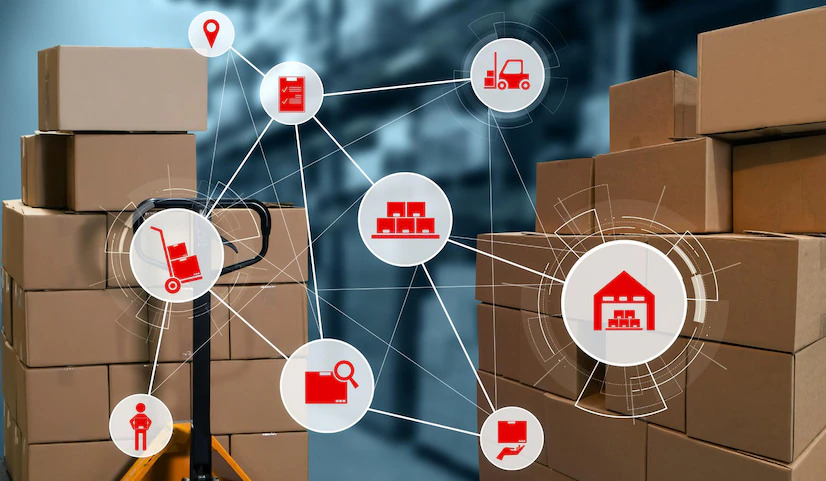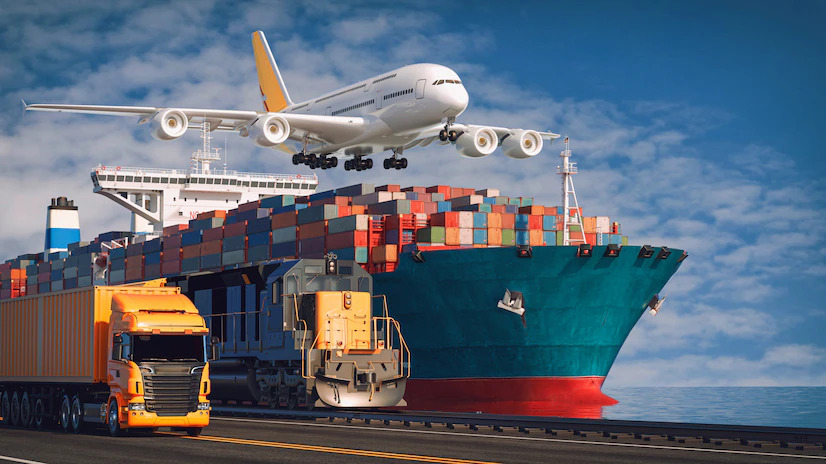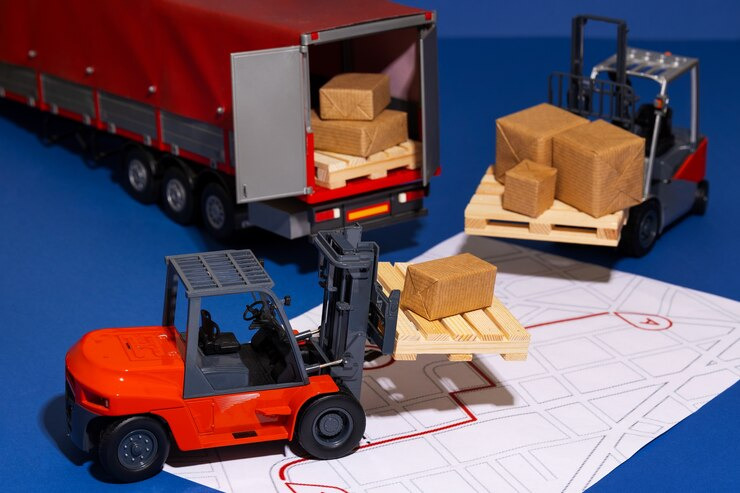China is one of the world’s largest exporters of goods, and many businesses choose to import from China for various reasons. Some of the benefits of shipping from China to America include:
- Lower production costs and labor rates
- Access to a wide range of products and suppliers
- Ability to customize products according to specifications and preferences
- Opportunity to tap into a huge and growing market
However, shipping from China to America is not a simple process. It involves many steps, challenges, and risks that need to be considered and managed carefully. In this article, we will explain the shipping process, the different shipping options and their pros and cons, the customs and import duties, the tips for finding reliable shipping agents and suppliers in China, the documentation and paperwork required for shipping, the shipping timelines and transit times, and the handling of customs clearance and delivery in America.
Understanding the Shipping Process

The shipping process from China to America can be divided into four main stages:
- Pre-shipment: This stage involves finding and negotiating with a supplier in China, placing an order, arranging the payment, and preparing the necessary documents and certificates for the shipment.
- Shipment: This stage involves choosing a shipping method, booking a space with a carrier or a freight forwarder, packing and labeling the goods, and loading them onto the transport vehicle (truck, train, plane, or ship).
- Customs clearance: This stage involves declaring the goods to the customs authorities in both China and America, paying the applicable taxes and duties, and complying with the import regulations and restrictions of both countries.
- Delivery: This stage involves unloading the goods from the transport vehicle, inspecting and verifying them, and transporting them to the final destination (warehouse, store, or customer).
Each stage of the shipping process requires careful planning, coordination, and communication between the parties involved, such as the buyer, the seller, the carrier, the freight forwarder, the customs broker, and the customs officials. Any delay, error, or dispute in any stage can result in additional costs, penalties, or even loss of goods.
Different Shipping Options and Their Pros and Cons

There are three main shipping options for importing from China to America: sea freight, air freight, and express courier. Each option has its own advantages and disadvantages, depending on the factors such as the type, size, weight, value, and urgency of the goods, the shipping distance and route, the shipping cost and budget, and the shipping reliability and security.
- Sea freight: Sea freight is the most common and economical shipping option for importing from China to America. It is suitable for large, heavy, bulky, or low-value goods that are not time-sensitive. Sea freight can offer lower shipping rates per unit of volume or weight, and can handle almost any kind of cargo. However, sea freight also has some drawbacks, such as longer transit times, higher risk of damage or loss, more complex documentation and customs clearance, and more environmental impact.
- Air freight: Air freight is the fastest and most reliable shipping option for importing from China to America. It is suitable for small, light, high-value, or perishable goods that are time-sensitive or require special handling. Air freight can offer shorter transit times, lower risk of damage or loss, easier documentation and customs clearance, and less environmental impact. However, air freight also has some drawbacks, such as higher shipping rates per unit of volume or weight, and limited capacity and availability.
- Express courier: Express courier is a hybrid shipping option that combines air freight and road transport for importing from China to America. It is suitable for very small, urgent, or high-priority goods that require door-to-door delivery and tracking. Express courier can offer the fastest and most convenient shipping service, with guaranteed delivery times, online tracking, and insurance. However, express courier also has some drawbacks, such as the highest shipping rates per unit of volume or weight, and strict limitations on the size, weight, and type of goods.
Customs and Import Duties

Customs and import duties are the taxes and fees that are levied by the customs authorities of both China and America on the imported goods. They are based on the value, quantity, and classification of the goods, as well as the origin and destination countries. Customs and import duties are meant to protect the domestic industries, regulate the trade, and generate revenue for the government.
The customs and import duties vary depending on the type of goods and the trade agreement between China and America. Generally, the customs and import duties are higher for goods that are subject to quotas, tariffs, anti-dumping measures, or other trade restrictions. The customs and import duties are lower or exempt for goods that are subject to preferential treatment, free trade zones, or other trade incentives.
The customs and import duties are usually paid by the importer of record, who is the person or entity that is responsible for the shipment and the customs declaration. The importer of record can be the buyer, the seller, or a third party, depending on the terms of the trade contract. The customs and import duties are usually paid at the time of customs clearance, either in advance or upon arrival of the goods.
The customs and import duties can have a significant impact on the total cost and profitability of importing from China to America. Therefore, it is important to research and calculate the customs and import duties before placing an order, and to choose the most favorable shipping terms and methods to minimize the customs and import duties.
Tips for Finding Reliable Shipping Agents and Suppliers in China

Finding reliable shipping agents and suppliers in China is one of the most critical and challenging steps in the shipping process. Shipping agents and suppliers are the intermediaries that facilitate the trade and the transport of the goods between China and America. They can provide various services, such as sourcing, quality control, inspection, packaging, labeling, warehousing, booking, tracking, insurance, documentation, and customs clearance.
However, not all shipping agents and suppliers in China are trustworthy and competent. Some of them may be fraudulent, unprofessional, or inexperienced, and may cause problems, such as poor quality, delayed delivery, damaged goods, hidden fees, or legal issues. Therefore, it is essential to verify and evaluate the shipping agents and suppliers in China before working with them.
Some of the tips for finding reliable shipping agents and suppliers in China are:
- Do online research: Use online platforms, such as Alibaba, Global Sources, Made-in-China, or TradeKey, to search for and compare the shipping agents and suppliers in China. Check their profiles, reviews, ratings, certifications, and credentials, and contact them directly to ask for quotations, samples, references, and contracts.
- Do offline verification: Visit the shipping agents and suppliers in China in person, or hire a third-party inspection company, to verify their identity, location, registration, reputation, capacity, and quality. Conduct audits, inspections, tests, and interviews, and review their documents, records, certificates, and licenses.
- Do due diligence: Consult with experts, lawyers, or trade associations, to check the legal and financial status, background, and history of the shipping agents and suppliers in China. Verify their compliance with the trade laws, regulations, and standards of both China and America, and their involvement in any disputes, lawsuits, or sanctions.
- Do relationship building: Establish and maintain a good and long-term relationship with the shipping agents and suppliers in China, based on trust, communication, and cooperation. Negotiate the terms and conditions, clarify the expectations and responsibilities, and resolve any issues or conflicts in a timely and respectful manner.
Documentation and Paperwork Required for Shipping

Documentation and paperwork are the essential and mandatory parts of the shipping process. They are the written or electronic records that prove the identity, ownership, value, and status of the goods, and that authorize the trade and the transport of the goods between China and America. They are required by the parties involved in the shipping process, such as the buyer, the seller, the carrier, the freight forwarder, the customs broker, and the customs officials, for various purposes, such as verification, validation, payment, clearance, and delivery.
The documentation and paperwork required for shipping from China to America may vary depending on the type, size, value, and destination of the goods, the shipping method, and the trade terms. However, some of the common and important documents and papers that are usually required are:
- Commercial invoice: A document that shows the details of the goods, such as the description, quantity, price, value, currency, origin, and destination, and the details of the buyer and the seller, such as the name, address, contact, and tax identification number. It is used for payment, valuation, and taxation purposes.
- Packing list: A document that shows the details of the packing, such as the number, weight, volume, and dimensions of the packages, and the contents and marks of each package. It is used for loading, unloading, and inspection purposes.
- Bill of lading (BOL) or air waybill (AWB): A document that shows the details of the shipment, such as the date, route, mode, carrier, and freight charges, and the details of the consignor, the consignee, and the notify party. It is used as a contract of carriage, a receipt of goods, and a document of title.
- Certificate of origin (COO): A document that shows the origin country of the goods, and the details of the producer, the exporter, and the importer. It is used to determine the eligibility of the goods for preferential treatment, such as lower or zero tariffs, under the trade agreement between China and America.
- Customs declaration form: A document that shows the information of the goods, such as the classification, value, quantity, and purpose, and the information of the importer of record, such as the
- name, address, contact, and tax identification number. It is used to declare the goods to the customs authorities, and to pay the applicable taxes and duties.
- Other documents and papers: Depending on the specific requirements of the goods, the shipping method, and the trade terms, some other documents and papers may also be required, such as:
- Insurance certificate: A document that shows the details of the insurance coverage, such as the type, amount, and duration of the insurance, and the details of the insurer, the insured, and the beneficiary. It is used to prove the insurance of the goods, and to claim compensation in case of damage or loss.
- Inspection certificate: A document that shows the results of the inspection, such as the quality, quantity, condition, and conformity of the goods, and the details of the inspector, the inspection agency, and the inspection standards. It is used to verify the compliance of the goods with the specifications and regulations of both China and America.
- Export license: A document that shows the permission of the Chinese government to export the goods, and the details of the exporter, the goods, and the destination. It is used to comply with the export controls and restrictions of China, and to prevent the export of prohibited or restricted goods.
- Import permit: A document that shows the permission of the American government to import the goods, and the details of the importer, the goods, and the origin. It is used to comply with the import controls and restrictions of America, and to prevent the import of prohibited or restricted goods
The documentation and paperwork required for shipping from China to America are very important and complex, and any mistake, omission, or discrepancy can result in delays, fines, or confiscation of the goods. Therefore, it is advisable to consult with a professional customs broker or a freight forwarder, who can help with the preparation, submission, and verification of the documents and papers, and ensure a smooth and hassle-free shipping process.
Shipping Timelines and Transit Times

Shipping timelines and transit times are the durations of the shipping process, from the time the order is placed to the time the goods are delivered. They are affected by various factors, such as the type, size, weight, and value of the goods, the shipping method, the shipping distance and route, the shipping season and weather, the shipping capacity and availability, the shipping terms and conditions, and the customs clearance and delivery procedures.
The shipping timelines and transit times vary depending on the shipping option chosen, and the origin and destination ports or airports. Generally, the shipping timelines and transit times are longer for sea freight, shorter for air freight, and shortest for express courier. However, they are also subject to changes and uncertainties, due to unexpected events, such as delays, errors, disputes, or accidents.
The following table shows the approximate shipping timelines and transit times for each shipping option, based on the average data from the past year:
| Shipping Option | Shipping Timeline | Transit Time |
|---|---|---|
| Sea freight | 30-45 days | 15-30 days |
| Air freight | 10-15 days | 3-7 days |
| Express courier | 5-10 days | 1-3 days |
The shipping timelines and transit times are only estimates, and they do not include the pre-shipment and delivery stages, which can also take several days or weeks, depending on the complexity and efficiency of the processes. Therefore, it is important to plan ahead, track the shipment, and communicate with the parties involved, to ensure a timely and successful delivery of the goods.
Handling Customs Clearance and Delivery in America

The final stage of the shipping process is the handling of the customs clearance and delivery in America. This stage involves the following steps:
- Unloading: The goods are unloaded from the transport vehicle (ship, plane, or truck) at the port or airport of entry in America, and transferred to a bonded warehouse or a terminal, where they are stored until they are cleared by the customs authorities.
- Inspection: The goods are inspected by the customs officials, who check the documents, papers, and certificates, and verify the identity, quantity, quality, and value of the goods. They also check the compliance of the goods with the import regulations and restrictions of America, and the eligibility of the goods for preferential treatment, if applicable.
- Valuation: The goods are valued by the customs officials, who determine the customs value of the goods, based on the transaction value, or the price paid or payable for the goods, or other methods, such as the deductive value, the computed value, or the fallback value. The customs value is used to calculate the customs duty and other taxes and fees that are payable by the importer of record.
- Classification: The goods are classified by the customs officials, who assign a harmonized system (HS) code to the goods, based on the description, nature, and function of the goods. The HS code is a standardized numerical code that identifies the goods and their corresponding tariff rate and trade statistics. The HS code is used to determine the customs duty and other taxes and fees that are payable by the importer of record.
- Payment: The goods are cleared by the customs officials, who issue a customs release or a customs entry, after the importer of record pays the customs duty and other taxes and fees that are due. The customs duty and other taxes and fees are based on the customs value, the HS code, and the origin country of the goods, and they vary depending on the type and amount of the goods. The customs duty and other taxes and fees are usually paid by the importer of record, either in advance or upon arrival of the goods, through various methods, such as cash, check, credit card, or electronic funds transfer.
- Delivery: The goods are delivered by the carrier or the freight forwarder, who transport the goods from the port or airport of entry to the final destination (warehouse, store, or customer), after they receive the customs release or the customs entry from the customs officials. The delivery may also involve the services of a customs broker or a delivery agent, who can help with the documentation, paperwork, and coordination of the delivery.
The handling of the customs clearance and delivery in America is a crucial and complex stage of the shipping process, and it requires the cooperation and compliance of the importer of record, the carrier, the freight forwarder, the customs broker, the customs officials, and the delivery agent. Any mistake, omission, or discrepancy in this stage can result in delays, fines, or confiscation of the goods. Therefore, it is advisable to hire a professional customs broker or a freight forwarder, who can help with the handling of the customs clearance and delivery in America, and ensure a smooth and hassle-free shipping process.
Conclusion
Shipping from China to America is a common and profitable business activity, but it is also a challenging and risky one. It involves many steps, challenges, and risks that need to be considered and managed carefully, such as:
- Choosing the best shipping option and method
- Calculating the customs and import duties.
- Finding reliable shipping agents and suppliers in China.
- Preparing the documentation and paperwork required for shipping.
- Estimating the shipping timelines and transit times.
- Handling the customs clearance and delivery in America.
By following the guide and the tips provided in this article, and by consulting with experts and professionals, such as customs brokers and freight forwarders, you can successfully and efficiently ship from China to America, and enjoy the benefits of importing from China.




